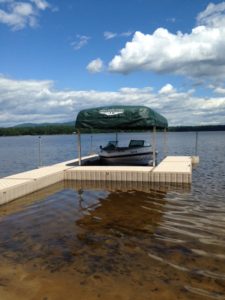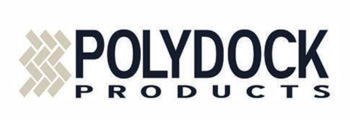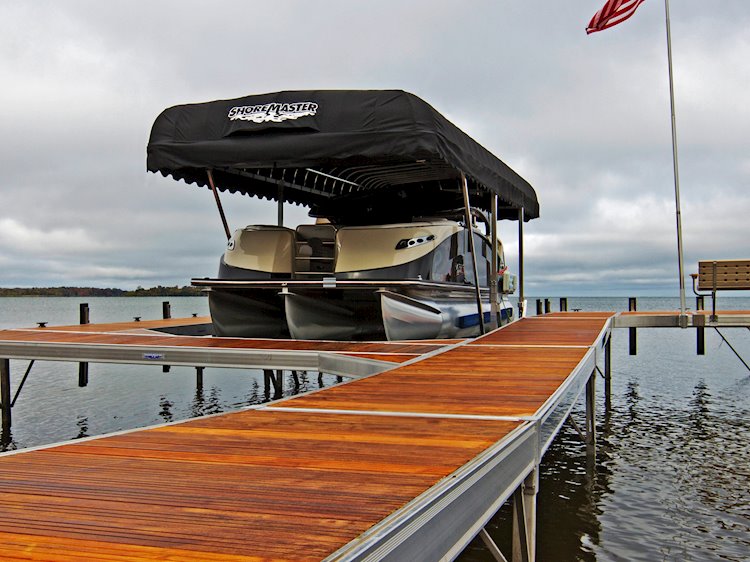
Jan 22, 2019
DOCK DECKING
Dock decking is a critical choice. With all the decking choices – it’s the most important choice you make.
Frames for docks were covered in Part 1 of this series. Part 2 will cover the many choices of decking you have.
WOOD DECKING
Wood decking was the first and only choice for decking. It required yearly cleaning. As simple as cleaning a deck may sound, it takes time each year.
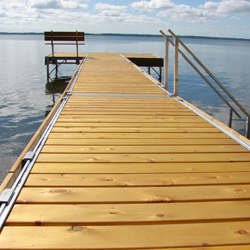
Cedar Wood Decking from ShoreMaster
The costs and inconvenience mount up.
In addition, a wood deck gets uncomfortably hot on sunny days. It also traps the dirt on its flat surface. This dirt needs to be washed off to prevent mold from forming. People started to look for other choices.
Then, along came a better choice!
ALUMINUM DOCK DECKING
Aluminum decking cuts down on maintenance. It solves the problem of painting or staining and sealing the wood. It only requires minimal washing to keep its appearance. No pressure washing or cleaners needed.
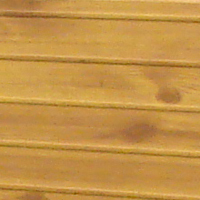
Aluminum Decking by ShoreMaster- Natural Woodgrain
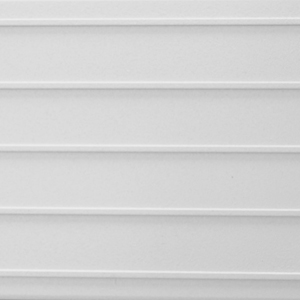
Aluminum Decking by ShoreMaster – White
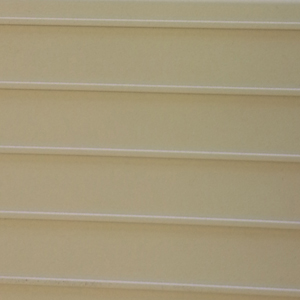
Tan Aluminum Decking by ShoreMaster
Plus, it does not get hot in the prolonged heat of the summer. The heat rapidly dissipates, so it stays cool to the touch.
There are many colors, and they look great.
Are there problems with aluminum?
Despite the advantages, aluminum does make noise when walked on. This issue is corrected by applying a cushion tape to the top of the frame.
Additionally, like wood, it comes in a “board” form. Why is that important?
PLASTIC DECKING
Initially, plastic decking came in a board form. The board was bolted to the frame so it would not wash away. This worked great except the plastic shrinks and swells in the weather. It also gets dirty from rain and sand.
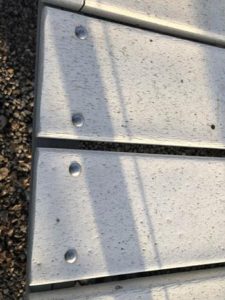
Typical Plastic boards
Most importantly, when the waves reached the decking, the 1/2″ opening between the boards was too small to relieve the pressure. This caused some docks (even heavy steel docks) to flip over.
People also mixed it with wood fibers which swelled over time. Still not a solution. Yet, plastic was a great idea, just not in a board form.
So what is the answer?
Back to plastic again
But not just any plastic. Flow-Through decking from ShoreMaster turned out to be the solution.
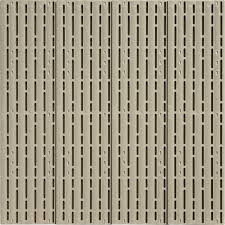
Glacier Flow Through Plastic Decking
There are many reasons that plastic Flow-Through decking is the best choice including:
• It’s lightweight;
• Available in many colors and patterns;
• Eliminates the need to clean the decking;
• Can be mounted to the frame with a breakaway clip (recommended) or screwed down);
• It’s cool in the summer heat; and
• Most importantly, it has a 42% open surface which means 42% less pressure.
The open surface allows the water to pass through the decking. These openings relieve the pressure on the dock when a wave hits it. Solid boards do not do this.
In addition to eliminating the pressure of the water, it “self-drains” due to its curved surface. The decking does not allow moisture buildup on the panels. You have now removed one of (3) ingredients for mold and mildew to form. See related article: https://wisconsinpws.com/cleaning-wood-decking/
In conclusion, if you want the BEST decking for your money – look for Flow-Through decking from ShoreMaster at PIER & WATERFRONT SOLUTIONS.
For more information about additional types of decking follow this link: https://wisconsinpws.com/best-dock-decking/
Where can you find Flow Through decking?
At Pier and Waterfront Solutions, of course.
Publication dates:
Part 1 – What does a Dock cost?
2 – What type of decking is available?
3 – Which dock configuration should I choose?
Need Help Planning a Dock System For Your Home or Cottage?
Do you have a friend that may be interested in this information? Please share a link to this page with them.
PWS is located at 7325 St. Hwy 57. That’s 1 mile North of County MM (Hwy 42) and 3 miles South of Sturgeon Bay at the Idlewild Road intersection.
Our staff is here year-round to assist you.
Jan 15, 2019
WHAT DOES A DOCK COST?
That’s the question our sales team is asked all the time. We have the answer to this question – “It depends.”
Seriously though, that’s the truth – because it depends on so many factors. Your answer to these simple questions will help us to determine the cost of your pier:
- Where will it be located?
- The type of lake bottom you have?
- The size of the waves you encounter?
But, not to worry, our sales team knows the Door County peninsula. Our sales team lives and work here. We know what to expect and we will guide you through the process. We have customers on virtually every shoreline on the Door County peninsula.
One of the first questions we ask is “where will it be installed?” This question starts the process by narrowing down the frame construction you need.
You may need a floating dock because the bottom is muddy and the area has no waves. Others need a massive, heavy frame to help hold it in place during a storm.
NEED A DOCK AND NEW TO THE AREA?
Have no idea what to expect? Our list of customers is so extensive, we can look up other docks that we sold in your area. Site visits are very important and we offer them FREE.
Door County is a unique area. There are areas where a wave of 5 inches is considered a big wave. Then, there are areas where 5-foot waves are the norm.
A floating dock will not work in areas with large waves. A stationary or wheel-in dock will not work in a deep, muddy situation. Given these examples, it makes sense that one type of dock may not work in both areas. We have to ask questions to narrow our recommendations down.
To determine your cost we have to look at the three main components: Frame, Decking, and size of your structure.
HOW MANY FRAME CHOICES ARE THERE?
Pier & Waterfront Solutions (PWS) offers EIGHT frame styles. That’s more choices than anyone else.
Frame choices include:
Aluminum
TS9 (Stationary or Wheel in)
RS7 (Stationary or wheel in)
RS4 (Stationary with Curved frames optional)
FTS9 (Floating)
Poly
Polydock (Floating)
As a one-stop dealer, you’ll find a solution for all your dock & boat lift needs here.
FRAME EXAMPLES
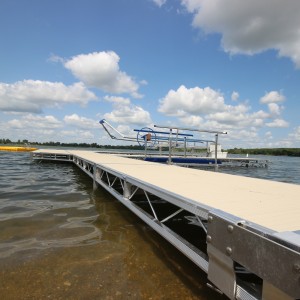
ShoreMaster TS9 Dock
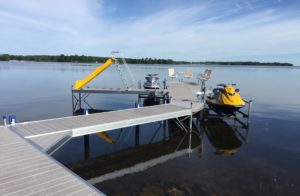
ShoreMaster RS7 and RS4 Curved Dock
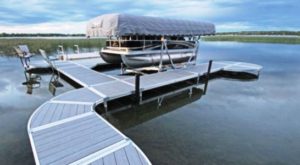
RS4 dock & RS4 Curved dock by ShoreMaster
Polydock by ShoreMaster
Create your perfect waterfront experience with the most user-friendly pier on the Door County peninsula. ShoreMaster aluminum dock systems provide exceptional stability and versatile configuration options.
Infinity TS9 Dock Frame
Available in Standing or Wheel-in Configurations
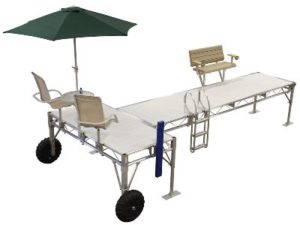
ShoreMaster TS9 Wheel-in Dock
The 9” frame is incredibly sturdy for its weight. It’s great for the rough waters of Green Bay. The truss frame is the most popular dock construction on the bay of Green Bay.
Infinity RS7
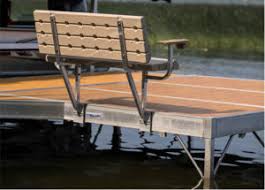
ShoreMaster RS7 Standing Dock
Standing or Wheel-in configurations available
RS7 frames are one of the most stable and attractive pier systems on the market.
The 7” frame can be configured to fit nearly any layout you desire. Perfect for a rocky to soft lake bottoms with shallow to moderate water depths.
Infinity RS4
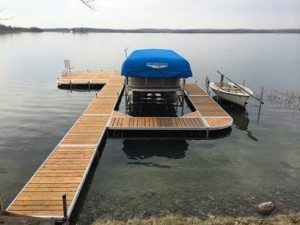
ShoreMaster RS4 dock with Curved Dock Sections
The ShoreMaster Infinity RS4 is highly configurable and durable. RS4 frames are ideally suited for a firm to slightly soft lake bottoms. The 4” frame easily handles shallow to moderate water depths and waves.
Don’t forget – these sections can be combined with the RS4 Curved units for even more configurations.
Floating FTS9
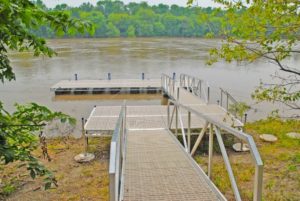
FTS9 Floating Dock
ShoreMasters Floating FTS9 is the perfect choice for, muddy, fluctuating, deep water conditions.
No more having to adjust the pier height during low or high water situations. A stable, floating dock system, it uses premium dock flotation and with a sturdy truss frame. It looks great and requires minimal maintenance
Polydock
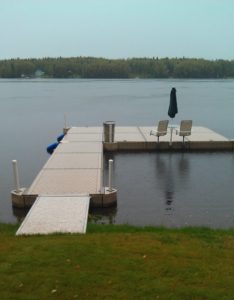
ShoreMaster Polydock
Floating Dock Sections
Polydock products help you get out and enjoy your time on the water. It is a floating, low-maintenance system that is functional as well as attractive. Accessories like the Shore Port personal watercraft lifts (https://www.shoremaster.com/lifts/lift-models/shoreport/) and a complete line of accessories are available.
You’ll be enjoying your new Polydock system in no time at all.
As you can see there are MANY options available for your particular needs. Follow up with Part 2 to see your choices in decking.
Looking for more detailed information on dock frames follow this link: https://wisconsinpws.com/piers-docks/
Publication dates:
Part 1 – What does a Dock cost?
2 – What type of decking is available?
3 – Which dock configuration should I choose?
Need Help Planning a Pier System For Your Home or Cottage?
Do you have a friend that may be interested in this information? Please share a link to this page with them.
PWS is located at 7325 St. Hwy 57. That’s 1 mile North of County MM (Hwy 42) and 3 miles South of Sturgeon Bay at the Idlewild Road intersection.
Our staff is here year-round to assist you.
Jan 8, 2019
DOES A DOCK NEED AN ANCHOR?

Do I REALLY need to use a dock anchor or auger? First-time dock owners in Door County ask this question all the time. Their concerns are valid – no one wants the extra work or cost if it isn’t needed.
First, let me say that on most inland lakes on the Door County peninsula it is not necessary to install an auger or anchor. Except for Lake Winnebago, the inland lakes generally are not deep enough or wide enough to be of concern. Without an open expanse, the waves typically do not present a problem. That statement is contingent on you having the dock set at the proper height.
WHAT SHOULD FIRST-TIME DOCK OWNERS LOOK FOR?
For new dock owners, we recommend you look around your area. How high are the docks set? Experience is a great teacher.
If a majority of the piers are set “low” to the water, it’s probably safe for you to do the same.
Here’s a great way to meet your neighbors. Most people want to help. Don’t be surprised if the name – Pier & Waterfront Solutions comes up in the conversation as the place to go.
In general, if the summer storms reach a height of 36 inches, then the bottom of the frame should be at least 38-42 inches above the water. This height allows the vast majority of the waves in a storm to pass under the dock frames.
WHO NEEDS TO ANCHOR A DOCK?
Summer thunderstorms kick up 4-6 waves on the bay of Green Bay with little warning. It’s no wonder that people use augers to anchor their docks.
One method to secure your dock is to pound pipe legs into the gravel or sand. This takes a toll on your back (or your friend’s back if you were smart enough to recruit help).
Not the best idea. Besides, you have to figure out a way to get the pipes out in the fall. You can’t pound UP!
This method is ineffective in most cases. A wave pounding against the bottom of the decking will lift the dock straight up. Once the leg is pulled out, the dock usually will twist or roll-over due to the continuous pounding from the waves.
WHAT OTHER OPTIONS DO I HAVE?
The recommended option is to use augers in critical locations. One way to do this: the husband holds the dock frame up (he’s strong you know). Meanwhile, his wife uses a pipe wrench to screw the auger pipes into the bottom. This is hardly a recipe for marital harmony either. We DO NOT recommend this procedure.

auger pipe
On a calm day, the only part of the pier that is in the water is the support pipes (legs). The legs have a low surface area in comparison to the entire dock. Waves easily pass around the legs with little resistance.
Minimal resistance is the key to securing your dock.
WHAT TYPE OF DECKING YOU USE IS IMPORTANT?
Most decking has an almost solid surface. As a result, there is no place for the water to relieve the pressure when it hits the dock. In a vast majority of decking, there are only a few 1/2″ openings in the decking. Waves hitting the underside of your dock have no way to reduce the pressure on the pier. This will cause an upward movement.

Typical Plastic decking
What’s the best decking with the least resistance to waves?
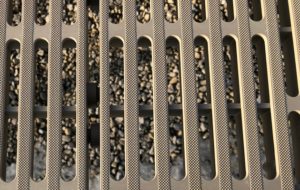
Open decking
Flow Through decking provides the least resistance to the waves by reducing the surface area by 42%
Our advice is to assess the worst case scenario for wave conditions in your area. Then set your dock height higher based on those conditions.
Setting the dock height too low on the bay is a bad idea. You do so at your own risk.
Customers with steel framed docks and board decking have found their docks flipped over in storms. The dock usually sinks. or in some cases, get washed down the shoreline. The parts of some of these piers have never been located.
Others were damaged because they ran out of pipe length and did not want to replace the pipes with longer ones. With the higher water levels the past few years, pipes that are too short are getting common.
In some situations, even though the dock height is set correctly, a neighbors boat or other floating debris will hit your dock. You can’t prevent every situation.
WHAT ABOUT BEDROCK?
There are many places where dock augers do not work due to the limestone bedrock in Door County. There are three ways to handle this.
The first is to use angled leg pockets. The legs are angled out from the dock similar to spreading your legs to gain stability. This helps stabilize the dock more than standard vertical legs. However, this is no guarantee that the storms will not flip your dock. It does help though.
ANOTHER WAY
The second way to anchor a dock involves drilling in rock anchors. Once installed a chain is attached between the dock and the anchor. The problem is – how to locate the anchors after the ice goes out in Spring. In some cases, the ice and boulders that move in the Spring will destroy the anchors.
A final option involves using a large, heavy mass in the water to secure the dock. This serves as a dock anchor during a storm. Depending on the depth of the water this may have to be removed from the water each year. The ice may move it away if the dock anchor gets trapped in it. A submerged weight may not be the easiest way to secure a dock.
In summary, after everything is said and done, the simplest method is to keep the dock set higher than the waves.
Need Help Planning a Dock System For Your Home or Cottage?
Do you have a friend that may be interested in this information? Please share a link to this page with them.
PWS is located at 7325 St. Hwy 57. That’s 1 mile North of County MM (Hwy 42) and 3 miles South of Sturgeon Bay at the Idlewild Road intersection.
Our staff is here year-round to assist you.
May 1, 2018
Decking for your dock is a critical choice
With all the materials available today for your dock – your decking choice is the most important decision you will make.
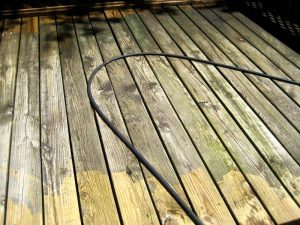
Cleaning wood decking
At one time, cedar or treated wood were your only choices. It wasn’t long before people realized the
maintenance for a wood deck took time away from enjoying their summer.
As simple as cleaning a deck may sound, it takes time each year. Even painted, or stained and sealed wood requires maintenance. The costs and inconvenience mount up quickly.
In addition, a wood deck gets uncomfortably hot on sunny days. It also traps the dirt on its flat surface. This dirt needs to be washed off to prevent mold from forming.
Then, along came a better choice!

ShoreMaster Aluminum Decking
Aluminum
Aluminum cuts down the maintenance considerably. It solves the problem of painting or staining and sealing the wood. It only requires minimal washing to keep its appearance. No pressure washing or cleaners needed.
Plus, it does not get hot in the prolonged heat of the summer. It dissipates the heat quickly.
Are there problems with aluminum?
Despite those advantages, aluminum does make noise when walked on. You can correct this issue by applying a custom tape to the frame.
Additionally, like wood, it comes in a “board” form only. Why is that important?
Standard practice is to install a dock high enough above the water to keep waves from reaching the deck. Many times a storm will send waves crashing against the bottom of the deck or worse yet, over it.
With only a 3% opening between the boards, this puts virtually all of the wave pressure directly on the deck.
With a deck bolted to the frame, the pressure from the waves goes directly to the frame structure. In many cases, this results in the entire dock twisting or flipping over no matter how massive the dock is.
There had to be a solution for this problem.
So what’s the Solution?
Plastic.
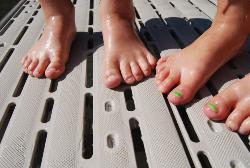
“Flow-Through” Decking
But not just any plastic. Flow-Through decking from ShoreMaster.
It’s also important to understand that not all plastic decking is an actual plastic deck. Some people refer to a composite deck as plastic decking. That is NOT the case.
If the plastic contains wood fibers, it will eventually swell with moisture, despite the fibers being “encapsulated” in plastic. The plastic will wear off the surface and expose the fibers.
You must also understand that there are two basic styles of plastic decking:
1. The “board” style (similar to wood boards); and
2. “open” panels. (perforated panels)
Here’s why that’s important.
The board style has the same problems that wood decking has but without the maintenance required on wood.
The “open” style eliminates the build-up of water on the panels. It self-drains” and cleans itself everytime it rains. It cleans itself without the moisture buildup on the panels. You just have removed one of (3) ingredients for mold and mildew to form.
There are numerous reasons that plastic is the best choice for decking including:
• It’s lightweight;
• Available in many colors and patterns;
• Eliminates the need to clean the decking;
• It can be mounted to the frame with a breakaway clip (recommended) or screwed down;
• It’s cool in the summer heat; and
• Most importantly, it has a 43% open surface.
The open surface allows the water to pass through the decking. These openings relieve the pressure on the dock when a wave hits it, unlike other decks.
In conclusion, if you want the BEST decking for your dock – look for
Flow-Through decking.
Where can you find Flow-Through decking?
At Pier and Waterfront Solutions, of course.
PWS is located at 7325 St. Hwy 42/57. That’s 1 mile North of County MM (Hwy 42) and 3 miles South of Sturgeon Bay. Look for the Idlewild Road intersection. Our staff is ready to assist year round.
Don’t forget – Give us a call If you want to see an issue discussed on our site.
Call Jerry at 920-493-4404 or Email Jerry@wisconsinpws.com with any questions.
Feb 5, 2018
A COMPLETE GUIDE TO DECKING OPTIONS – (Part 1)
Written by ShoreMaster Marketing Updated by Pier & Waterfront Solutions LLC
Wood decking is one of the many ShoreMaster options available for docks. In fact, they offer so many decking choices that it can be hard to grasp which option best fits your needs.
This first of three articles discusses the types of wood decking available from ShoreMaster – namely Cedar and IPE wood decking.
In Part 2 of the series, the topic will be the types of aluminum decking available. Finally, in the third part of the series, the topic will be the latest plastic and composite decking types.
How to choose the Right Wood Decking for your dock?
Some dock manufacturers are very limited in their decking options. This is a blessing to a dealer because it limits their on-hand inventory. At the same time, limited decking choices affect your ability to get the best choice for your needs.
With ShoreMaster decking you are not limited to one or two choices. or the few choices the dealer chooses to tell you about. Remember, Pier Waterfront Solutions LLC has access to the widest range of decking choices anywhere. This is a major positive for you as a dock owner.
Decking represents 25% – 50% of the total cost of a dock system
With this realization in mind, initial decking cost is obviously an important aspect when choosing decking for a dock system.
Plus, no element on any dock system connects closer to the dock user than the decking. The number of deck choices available to you remains the most important factor when purchasing that new dock.
You may be surprised to learn that initial cost is only a small factor in the total cost over the lifespan of the deck.
Considering Wood Decking For Your Dock System?
For traditionalists (or people on a budget), wood decking is the only way to go. It usually is the least expensive and natural looking product available.
Wood contains natural oils and tannins to resist rot, decay, and insects. As a result, natural wood does not need dangerous or harmful chemicals to prevent rotting.
Many dock owners like the look and feel of natural wood decking on their dock. At the same time, it’s important to note that wood decking requires more maintenance than aluminum, composite or plastic decking.
How much maintenance does natural wood require?

Pressure Washing to clean wood decking
In general, the recommendation for maintaining natural. unfinished wood decking is to power wash your decking annually. With a finish applied to wood, expect to clean and apply a fresh coat of finish every three to four years to keep it looking good. Now the cost is starting to add up.
Other Considerations
When choosing wood decking, it’s important to remember that wood decking will absorb the sun’s rays and become very warm to the touch on hot days. At times it may actually get uncomfortable to walk on it. On the flip side, wood decking will generally feel nice and warm on cooler days with any amount of sunshine.
Keep in mind that wood decking retains that heat longer than any aluminum or plastic decking.
Deciding between Hardwood Decking and Softwood Decking For Your Dock
Wood is a great natural looking and durable decking material for your dock system. Pier & Waterfront Solutions LLC offers two types of wood decking for your dock – IPE, which is a tropical hardwood, and Red Cedar, a softwood.
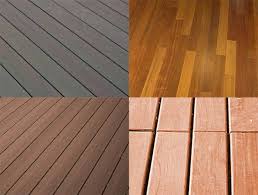
IPE Decking by ShoreMaster
The first thing that you are likely to notice the difference between hardwoods and softwoods is the price.
Hardwoods take longer to grow than softwoods, and as a result, it costs more for the hardwood materials. Another difference – is the density or the hardness of each material. Because hardwoods take longer to grow, the wood is denser. This makes hardwoods heavier than softwoods.
Softwoods grow quicker than hardwoods, so the wood becomes less dense and lighter. This makes it easier to cut and drill than hardwoods. Softwoods such as red cedar have varying levels of hardness and resistance to insects and decay.
What does this mean for the durability of the softwoods?
Durability is related to the amount of heartwood on the boards. Heartwood grows near the center of the tree, which makes it harder, and more resistant to insects and decay based on the amount of Sapwood in the section.
Sapwood grows near the outer part of the tree which means it is a bit softer and more susceptible to decay due to its lack of density. Red Cedar decking from ShoreMaster is carefully selected to contain less sapwood to prolong the life of the wood. This results in your decking becoming less susceptible to early weatherization and insects.
Whether you choose a hardwood or a softwood deck for your dock, you’ll be glad to know that each type of wood contains natural oils and tannins to help protect it from insects and decay. Both kinds of wood require about the same amount of maintenance each year to keep their natural appearance.
With no stain or finish applied, you still need to power wash your wood decking annually to keep it looking beautiful. Both IPE hardwoods and red cedar softwoods will weather to a silver-gray color with no stain or finish applied to the wood. Eventually, some areas of the decking will turn darker colors, even a gray-black with no yearly maintenance. See this article to see why this is true: https://wisconsinpws.com/cleaning-wood-decking/
Cedar Wood Decking

Cedar Wood Decking from ShoreMaster
When ShoreMaster sources cedar decking from its suppliers, they search for boards that contain more heartwood than sapwood. This makes your cedar decking less susceptible to insects and decay. This way you can be confident that your cedar decking will resist decay and remain safe. It also looks great on your shoreline.
To most dock owners, nothing feels better on your bare feet than the soft, warm, natural beauty of red cedar decking.
IPE Wood Decking
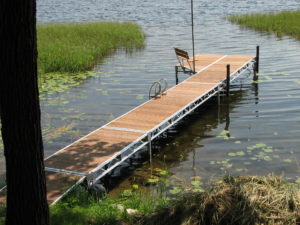
IPE Hardwood Decking from ShoreMaster
When it comes to Hardwood decking, nothing beats ShoreMaster’s IPE hardwood decking. ShoreMaster’s IPE hardwood adds a sense of stability to your dock. It feels incredibly firm underfoot because of its natural hardness and density. It looks great and provides a gentle, natural wood feel on your bare feet.
IPE, being a hardwood, is denser than and heavier than Cedar decking. It has the added benefit of resistance to being blown out of the dock by wind or waves due to it’s added weight.
All wood decking can be a problem on large bodies of water when waves beat against the bottom of the decking. With few open areas to relieve the pressure, it becomes prone to being washed out of the frames.
For natural beauty, nothing beats natural wood.
Reminder
Pier & Waterfront Solutions specializes in ShoreMaster docks, lifts, and accessories both residential and commercial. We service the rest.
PWS is located in the center of Door County at 7325 St Hwy 57. Located 1 mile North of County MM (Hwy 42) and South of Sturgeon Bay at the intersection of Idlewild Road. Our staff is ready to help you anytime.
Want us to address a dock or boat lift topic for you? Feel free to give us a call.
Call Jerry at 920-493-4404 or email him at Jerry@wisconsinpws.com for more information.










